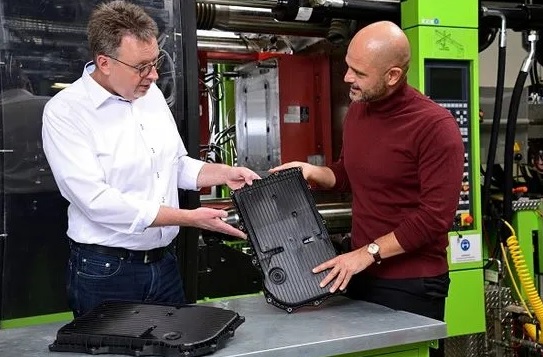On March 29, LANXESS announced that IBS Filtran GmbH, a German-American joint venture, used LANXESS Durethan BKV35H2.0 polyamide 6 composite material to produce transmission oil pans, which became polyamide 6 instead of polyamide 66 for the production of automotive oil circuit components. Another important example of
"IBS Filtran is a long-term partner of LANXESS. Both parties are committed to the development of automotive oil circuit components. One of the results of the cooperation is the development of the first plastic transmission oil pan," said Babak Talebloo, LANXESS key account manager in charge of IBS Filtran cooperation.

Advantages of polyamide 6
"There are two main reasons for using polyamide 6 to make a new oil pan. First, it meets the key requirements of heat resistance, oil resistance, strength and surface quality; second, its price is much lower than that of polyamides on the market. Amide 66.” explains Christof Boden, an expert on plastic components for automotive oil circuits at LANXESS.
IBS Filtran conducted extensive research on polyamide 6 (reinforced with 35% short glass fibers) and found that it has the following advantages:
At 150°C, the anti-aging performance is almost the same as that of polyamide 66;
It has better impact resistance and elongation at break, making the oil pan more resistant to the impact of small stones;
Give the oil pan a higher surface quality and make the surrounding gaskets perform better;
Has a lower shrinkage rate, which helps reduce warpage;
It has good weldability, strong weld seam strength and strong pressure-bearing capacity.
The structure supply problem of polyamide 66
In the past three years, the price of polyamide 66 has risen sharply from time to time, which is mainly caused by the shortage of adiponitrile, the main product of the material, in some cases. This has also prompted manufacturers of plastic parts for oil circuits to seek cheaper and more reliable products to replace polyamide 66. Therefore, polyamide 6 with properties similar to polyamide 66 has become a viable alternative.
"In addition to automobile transmission oil pans, polyamide 6 is increasingly being used in the mass production of truck oil pans and cylinder head covers," Boden explained.
More new products for oil circuit components
In recent years, LANXESS has continued to expand the application range of polyamide products with automotive oil circuits as its target market. It has successively launched three polyamide 6 composite products including Durethan ECOBKV30H2.0. They all contain recycled fibers made of waste glass, which account for 30%, 35%, and 60% of their weight respectively, which is in line with the recycling economy advocated by the automobile industry.
Another example of a new application for automotive oil circuits is the XTS series of polyamides. XTS refers to the stability under extreme temperatures and emphasizes the super heat resistance of the compound-it can withstand high temperatures up to 230°C for a long time. "Some vehicles have a catalytic converter next to the transmission, so that the oil pan needs to withstand more heat in the exhaust gas treatment gap, and the XTS series products can cope with this situation," Boden explained.

